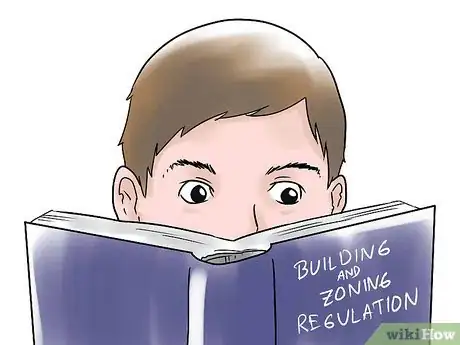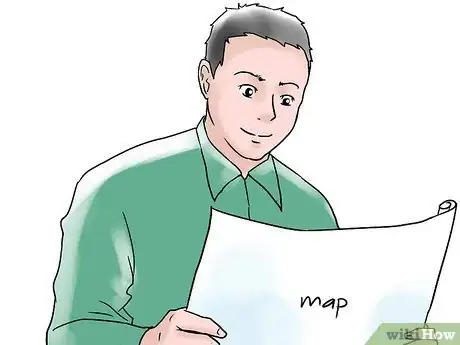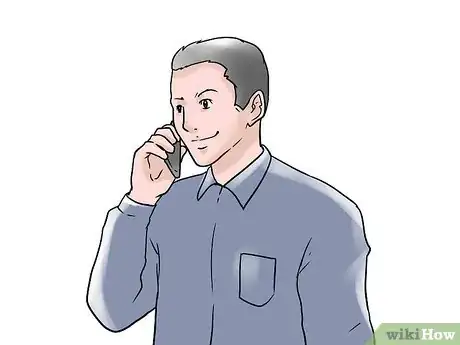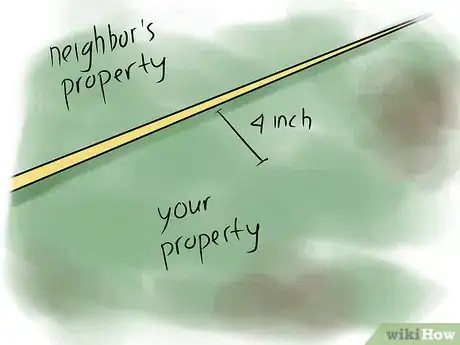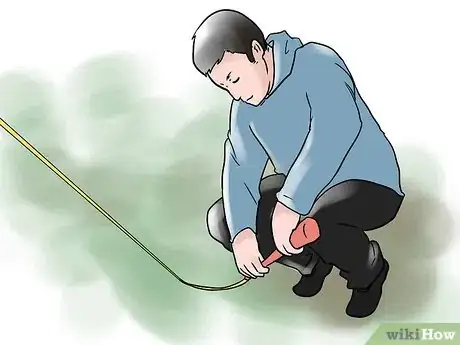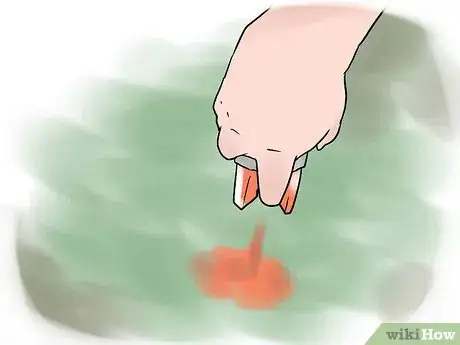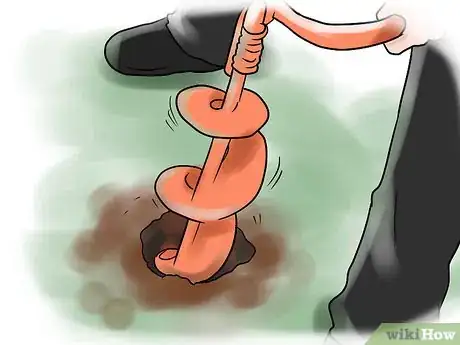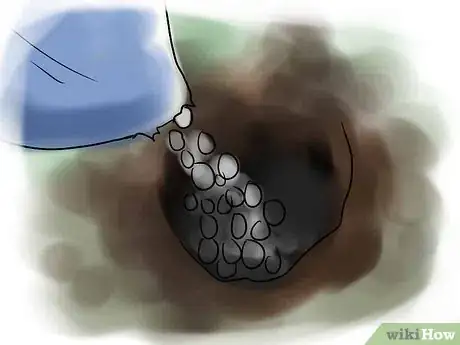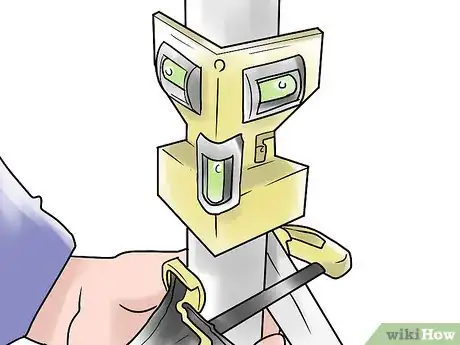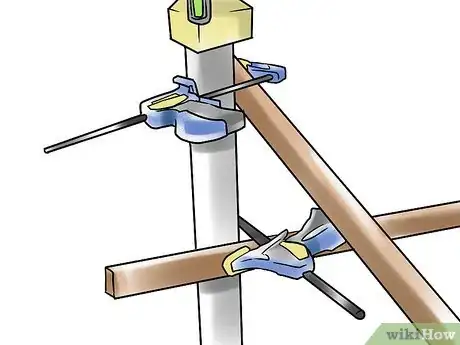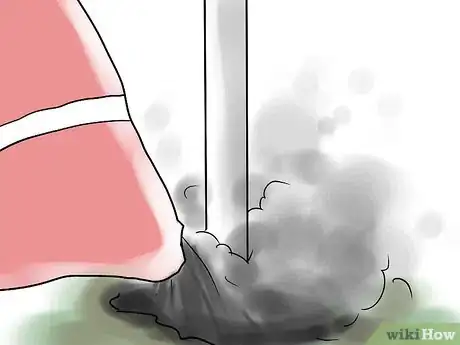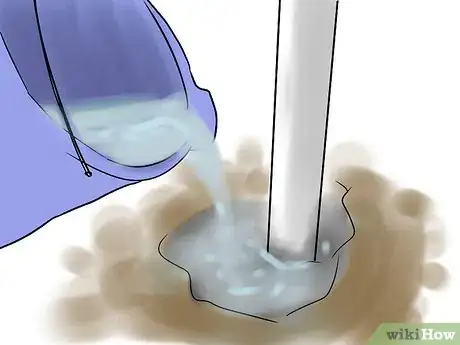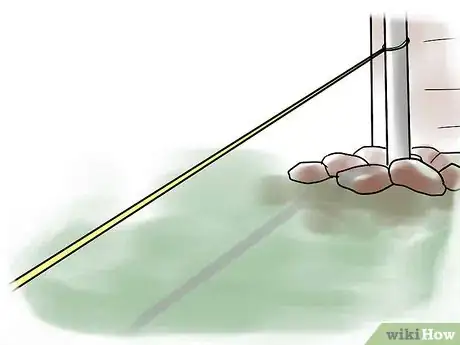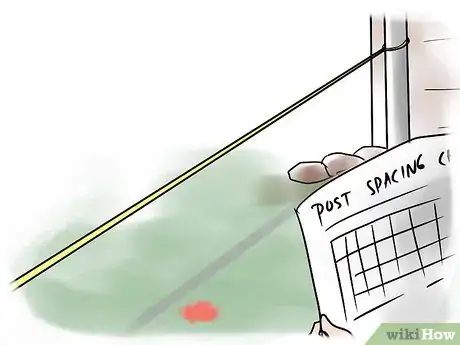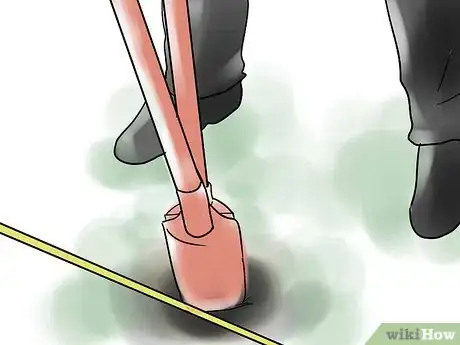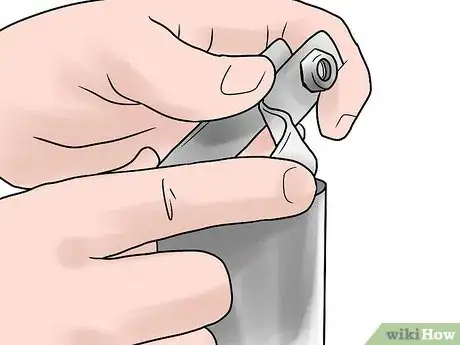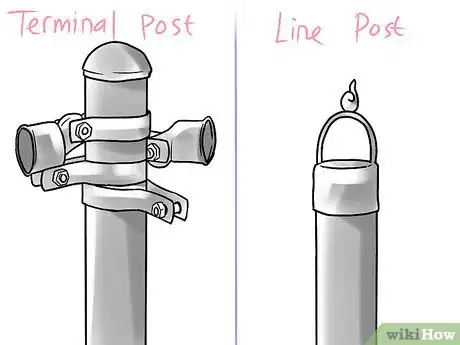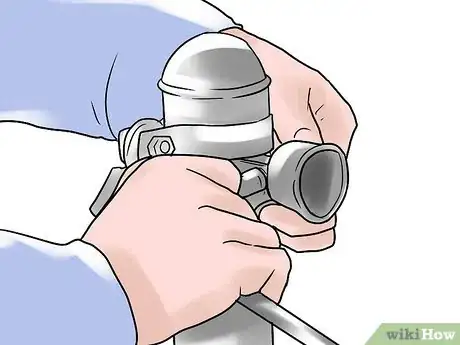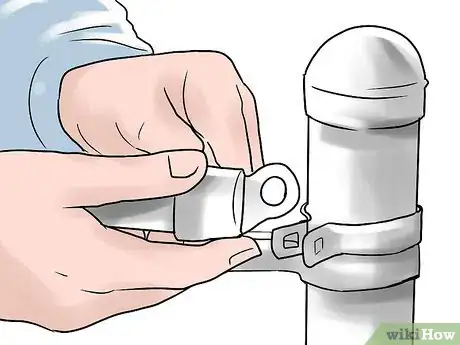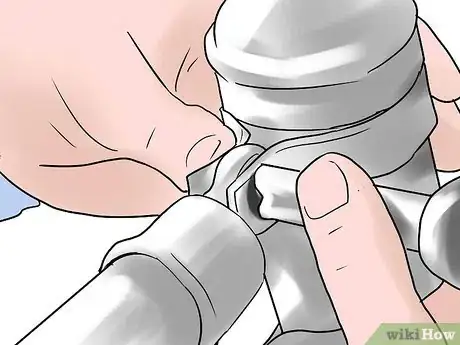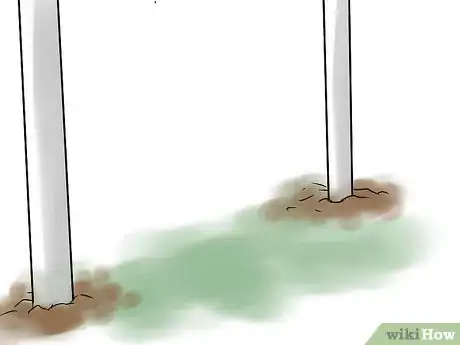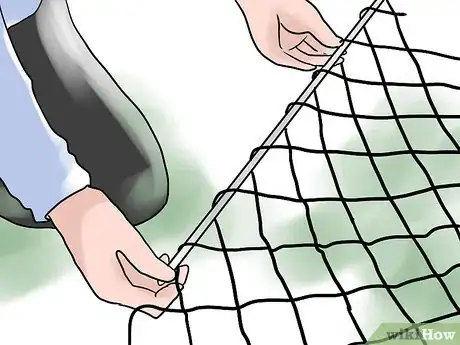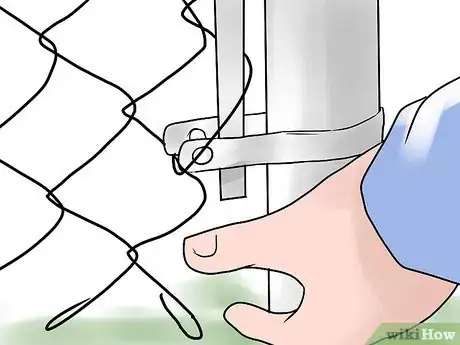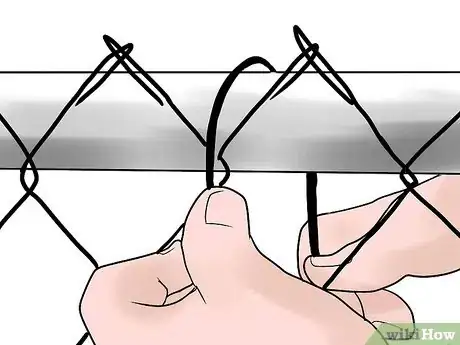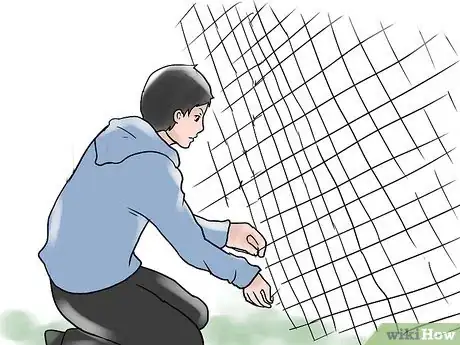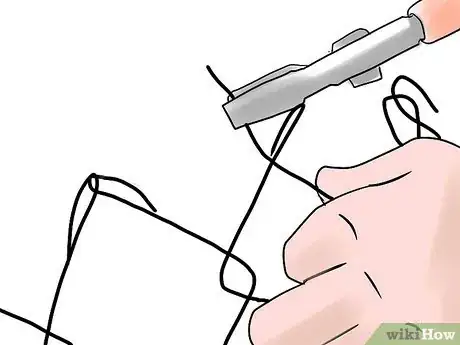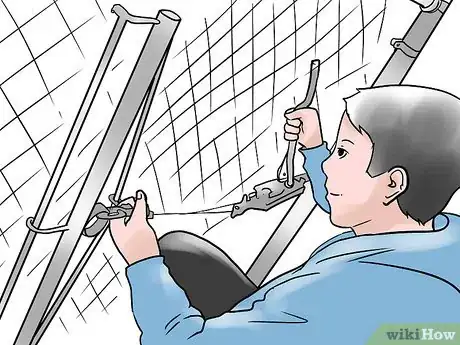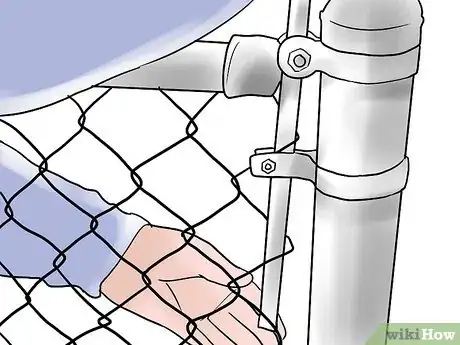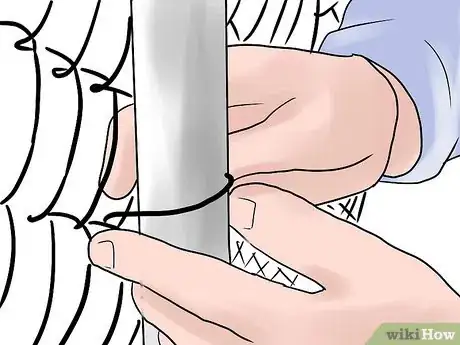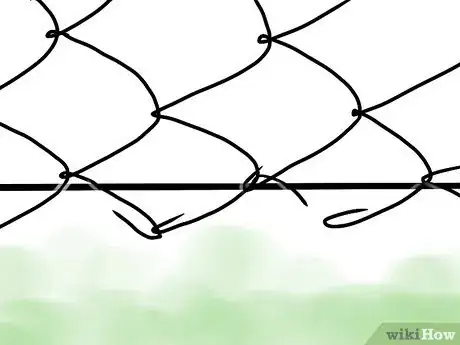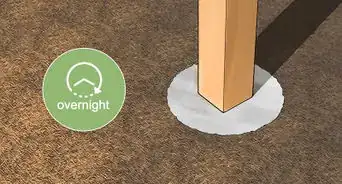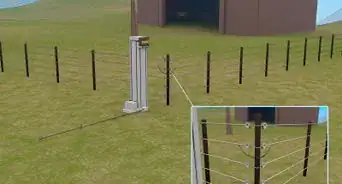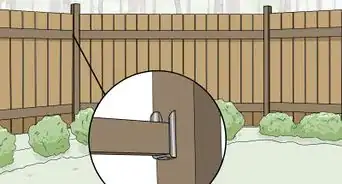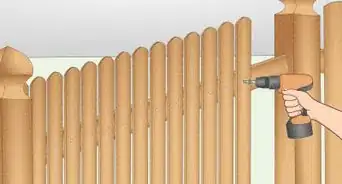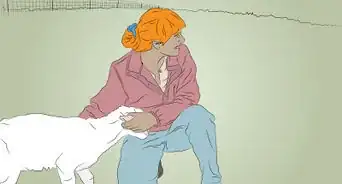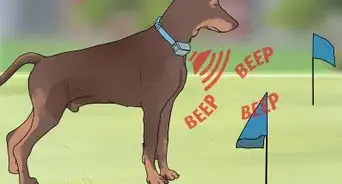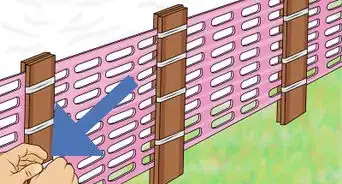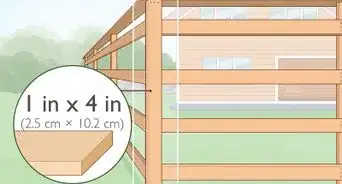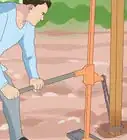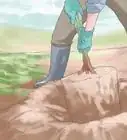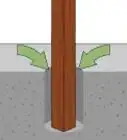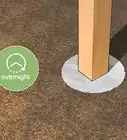This article was co-authored by Anthony "TC" Williams. Anthony "TC" Williams is a Professional Landscaper in Idaho. He is the President and Founder of Aqua Conservation Landscape & Irrigation, an Idaho Registered Landscape Business Entity. With over 21 years of landscaping experience, TC has worked on projects such as the Idaho Botanical Garden in Boise, Idaho. He is a Idaho Registered Contractor and a previously Licensed Irrigator in the State of Texas.
wikiHow marks an article as reader-approved once it receives enough positive feedback. In this case, 83% of readers who voted found the article helpful, earning it our reader-approved status.
This article has been viewed 405,396 times.
If you need to enclose a piece of land, then a chain-link fence might be the answer. A chain-link fence is an inexpensive way to enclose any sized area for safety or security. Unlike solid fencing, chain-link's open weave design lets people see through the fence, while still serving as a barrier to unauthorized entry. With planning, patience, and a bit of elbow-grease, you can install a chain link fence yourself.
Steps
Preparing to Install the Fence
-
1Obtain any necessary permits. Your local government may have building and zoning regulations that regulate fence setbacks, type, and height. If you install a fence without a permit, they may tear down the structure.
-
2Establish where your property lines are located. This information can be obtained from city records, a realtor's line plot map, or by hiring a surveyor.[1]Advertisement
-
3Find out where your utility lines are. Have your utility companies mark the location of your utility lines. You don't want to accidentally hit them while digging post holes.[2]
- You can call 811 from anywhere in the US. Your local utility companies will then send an employee to mark your utility lines for free.
-
4Review any neighborhood covenants for regulations on fencing. Some neighborhood associations have their own rules regarding height and style, additional to the rules enforced by your town.
Marking and Installing Terminal Posts
-
1Locate the property lines that border your neighbor's. For your post holes, measure approximately 4 inches (10.2 cm) inside those lines. This prevents the concrete footings from encroaching onto your neighbor's property. Clear the working space along the entire length of the property line to make it easier to move a wheelbarrow, as well as for rolling out the fence for installation.[3]
-
2Measure the total length of your planned fence. This determines how many feet of chain-link mesh and the amount of hardware you'll need. Consult your local retailer for post spacing guidelines to determine the number of posts you'll need.[4]
-
3Find each terminal post location. Mark the exact spot with a stake or spray paint. A terminal post refers to any end, corner or gate posts.[5]
- Spray paint works best as stakes will create a possible tripping hazard and can cause injury.
-
4Dig all the terminal post holes first. Post holes should be dug 3 times the width and one-third the length of the post, with an extra 4 inches (10.2 cm) for gravel. Slope the sides so that the hole is wider at the bottom than at the top.[6]
-
5Fill the post holes with 4 inches (10.2 cm) of gravel. Tamp down the gravel to provide a compact foundation for the posts and concrete.[7]
-
6Stand a terminal post in the center of its hole. Mark the side of the post at ground level using a marker or chalk. The height above the line should equal the height of the fence mesh, plus 2 inches (5.1 cm).[8]
-
7Plumb the post. Plumbing a post helps keep your fence looking straight. Using a carpenter's level or plumb line to check the balance, position the post until its plumb.[9]
-
8Secure the post in position. Using clamps and pieces of 1" x 4" x 4' to 6' long lumber angled on two sides, brace the post in its plumb position by using wooden stakes driven into ground and screws. Double check all measurements, post spacing, and height one last time before securing it to the bracing material because you do not want it to be even slightly out of alignment when the concrete hardens.[10]
-
9Fill the hole with concrete. Pour or shovel concrete around the post. Smooth the surface with a trowel or small piece of wood, sloping away from the post to direct water elsewhere.[11]
-
10Repeat until all your terminal posts are installed. Allow time for the concrete to set, according to manufacturer's recommendations. Allow at least 24 hours at minimum before putting tension on posts.[12]
Marking and Installing Your Line Posts
-
1Run a string line between the terminal posts. The string should be taut, low to the ground, and positioned on the outside face of the terminal posts.[13]
-
2Mark the location of each line post. Using a post spacing chart, measure and mark the exact spot with a stake or spray paint.
-
3Dig the line post holes. Line post holes should be 6 inches (15.2 cm) wide and 18 inches (45.7 cm) to 24 inches (61.0 cm) deep, with sloping sides. Right before installing line posts, you can run a second, very tight line from terminal posts to set the height of line posts, but always re-check all measurements before final bracing.[14]
-
4Fill the line post holes with 4 inches (10.2 cm) of gravel. Pat down the gravel to provide a compact foundation for the posts and concrete.[15]
-
5Position a line post in the center of its hole. Use a marker or chalk to mark the side of the post at ground level. The height above the line should equal the height of the fence mesh, plus 2 inches (5.1 cm).[16]
-
6Make sure your post is plumb. Go around the post with your carpenter's level or plumb line, checking to see if the post is balanced. Continue moving the post until it's plumb.[17]
-
7Secure the post in the plumb position. Add clamps and long pieces of lumber that are angled on two sides to hold the post in its plumb position. Use wooden stakes in the ground as well as screws to brace the post. Before securing the post, double check that it's straight.[18]
-
8Pour in the concrete. Smooth over the surface of the concrete with a trowel or small piece of wood. Create a slope in your concrete so that water will slide down away from your fence post.[19]
-
9Continue until all of your line posts are installed. Allow time for the concrete to set, according to manufacturer's recommendations. Allow at least 24 hours at minimum before putting tension on posts.[20]
Add Bands and Caps to the Posts
-
1Slide tension bands onto each post. Tension bands secure the chain-link mesh to the posts. Use one less tension band than the height of the fence, in feet. For example, if the fence is 4-feet high, use 3 tension bands per post. For a 6-foot fence, use 5 bands, and so on.[21]
- The long, flat surface of the tension band should face toward the outside of the fence.
-
2Add the appropriate caps to posts. Terminal posts get end caps. Line posts get looped caps (for the top rail.)
-
3Tighten all the nuts and bolts, but not too tight. Leave some slack for adjustments.[22]
Install the Top Rail
-
1Feed the top rails through the loop caps. Cut off excess length with a pipe cutter or hacksaw. If the rails are too short, create longer runs by using rails with male-female coupling ends.[23]
-
2Insert the rail ends into the terminal rail caps. You may need to adjust the height of the rail caps to allow for the height of the chain link mesh, plus a 2 inch (5.1 cm) clearance at the bottom.[24]
-
3Tighten nuts and bolts. After checking your top rails and caps for proper fit and alignment, tighten all the hardware.[25]
-
4Add your dirt. Fill the line post holes with dirt, packing the dirt firmly around the holes.[26]
Hang the Fence Mesh
-
1Slide a tension bar vertically through the starting end of the mesh roll. This will stiffen the mesh so that you can attach it to the fence posts and rails.[27]
-
2Bolt the tension bar to one of the terminal posts' tension bands. The mesh should overlap the rail by 1 to 2 inches (2.5 to 5.1 cm) and be 2 inches (5.1 cm) off the ground.[28]
- You'll need someone to help you stand the mesh up to the end post and a socket wrench to turn the bolt.
-
3Begin unrolling the mesh. Stand it up against the fence frame, taking out the slack as you go.[29]
-
4Loosely attach the mesh to the top rail. Use fence ties to hold it in place. Separate enough length from the roll to span the opening between the terminal posts.[30]
-
5Splice sections together as needed. Using a single strand of wire removed from one end of the mesh, join two sections by corkscrewing the loose strand through the end links. A second strand may have to be removed to provide the correct line-up of "diamonds."[31]
-
6Remove excess mesh. Using pliers, untwist the top and bottom loops on one strand of wire where you want to separate the mesh. Work the freed strand out of the links until the two sections separate.[32]
Stretching the Chain-link
-
1Pull the mesh taut with a fence puller. The stretching is necessary so the fence doesn't sag. Thread the fence puller's bar into an unattached section of mesh, a short distance from the far end post.[33]
- Attach the fence puller's yoke to the pull bar and connect the other end of the puller to the far end post.
- Stretch the mesh with the fence puller until the mesh loops move less than a quarter-inch when squeezed by hand.
- If the mesh gets pulled out of shape during the tightening process, pull on it to reshape it.
-
2Add a second tension bar. Run a second tension bar through the end of the mesh near the fence puller. This will permit attaching the stretched mesh to the far end post's tension bands.Thread the fence puller's bar into an unattached section of mesh, a short distance from the far end post.[34]
-
3Complete your fence with a tension bar. Terminate the mesh with a tension bar on the far end post's tension bands. Remove any new excess produced by stretching.[35]
-
4Tie the mesh to the rails with aluminum wire. Space your ties 24 inches (61.0 cm) apart along the top rail and 12 inches (30.5 cm) apart on each line post.[36]
-
5Add tension wire (optional). Thread tension wire through the bottom mesh loops. Tighten the tension wire around the end posts. Draw the wire tight and wrap it around itself next to the posts.[37]
- Adding tension wire prevents animals from pushing in under the fence.
Community Q&A
-
QuestionThe contour of my yard changes between line posts. How do I bend the top rail to accommodate the slope?
 Community AnswerI had to do this once so I parked my truck on top of the rail at the point where the bend needed to start. Then I lifted the other end so it bent.
Community AnswerI had to do this once so I parked my truck on top of the rail at the point where the bend needed to start. Then I lifted the other end so it bent. -
QuestionHow often should I put in a line post?
 Community AnswerDetermine the actual distance of the section and then divide the distance by 10. Round your answer down to the next whole number - this is the required number of line posts. For example, if you had a fence that was 55' long, the formula would be: 55' ÷ 10 = 5.5. Round down to five, and you see that you would need five line posts for this section. If you place five line posts in between two terminal posts, it will yield six sections of fence. To determine the proper, equidistant spacing of line posts, divide the number of sections into the total distance.
Community AnswerDetermine the actual distance of the section and then divide the distance by 10. Round your answer down to the next whole number - this is the required number of line posts. For example, if you had a fence that was 55' long, the formula would be: 55' ÷ 10 = 5.5. Round down to five, and you see that you would need five line posts for this section. If you place five line posts in between two terminal posts, it will yield six sections of fence. To determine the proper, equidistant spacing of line posts, divide the number of sections into the total distance. -
QuestionIf there is a wire between posts along the bottom of a chain link fence, is this the tension wire?
 Community AnswerYes. That is the tension wire. The wire is simply to prevent the fencing from being pushed outward (or inward).
Community AnswerYes. That is the tension wire. The wire is simply to prevent the fencing from being pushed outward (or inward).
Warnings
- For security reasons, install all nuts on the inside of the fence. This make them more difficult to remove from the outside.⧼thumbs_response⧽
- Dig all post holes near the home or building by hand. Unmarked pipes and other lines may be located near the foundation.⧼thumbs_response⧽
- Be sure once the bracing is in place the posts and bracing do not get bumped, which could cause the post to move before the concrete has set.⧼thumbs_response⧽
Things You'll Need
- Rolls of chain link mesh fabric (sold in rolls of 50 feet)
- Metal top rail, line posts and terminal posts (may substitute wooden posts and rails)
- Post, rail and end caps (if using metal posts and rail)
- Tension bars and bands
- Fence stretcher
- Brace bands
- Fence ties
- Fence gates, hinges and hinge bolts (if installing a gate)
- Wire cutters
- Post hole digger or power auger
- Clamps and lumber
- Pipe cutter or hacksaw (for metal pipes) or saw (wooden posts)
- Rubber mallet
- Socket wrench
- Wheelbarrow or small cement mixer
- Concrete
- Shovel and hoe
- Tape measure
- Carpenter's level or plumb bob
- Stakes or spray paint
- String line
- Water hose with a shut off nozzle at work site
- Gloves
- Safety glasses
- Screws for bracing
- Drill with a bit for the screws
- 12" wooden stakes
- Small sledgehammer
References
- ↑ https://chainlinkinfo.org/wp-content/uploads/2015/08/Step-by-step-installation-guide-page1.pdf
- ↑ https://chainlinkinfo.org/wp-content/uploads/2015/08/Step-by-step-installation-guide-page1.pdf
- ↑ https://chainlinkinfo.org/wp-content/uploads/2015/08/Step-by-step-installation-guide-page1.pdf
- ↑ https://chainlinkinfo.org/wp-content/uploads/2015/08/Step-by-step-installation-guide-page1.pdf
- ↑ https://chainlinkinfo.org/wp-content/uploads/2015/08/Step-by-step-installation-guide-page1.pdf
- ↑ http://homeguides.sfgate.com/plumb-post-26067.html
- ↑ http://homeguides.sfgate.com/plumb-post-26067.html
- ↑ http://homeguides.sfgate.com/plumb-post-26067.html
- ↑ http://homeguides.sfgate.com/plumb-post-26067.html
- ↑ http://homeguides.sfgate.com/plumb-post-26067.html
- ↑ http://homeguides.sfgate.com/plumb-post-26067.html
- ↑ http://homeguides.sfgate.com/plumb-post-26067.html
- ↑ https://chainlinkinfo.org/wp-content/uploads/2015/08/Step-by-step-installation-guide-page1.pdf
- ↑ http://homeguides.sfgate.com/plumb-post-26067.html
- ↑ http://homeguides.sfgate.com/plumb-post-26067.html
- ↑ http://homeguides.sfgate.com/plumb-post-26067.html
- ↑ http://homeguides.sfgate.com/plumb-post-26067.html
- ↑ http://homeguides.sfgate.com/plumb-post-26067.html
- ↑ http://homeguides.sfgate.com/plumb-post-26067.html
- ↑ http://homeguides.sfgate.com/plumb-post-26067.html
- ↑ https://chainlinkinfo.org/wp-content/uploads/2015/08/Step-by-step-installation-guide-page1.pdf
- ↑ https://chainlinkinfo.org/wp-content/uploads/2015/08/Step-by-step-installation-guide-page1.pdf
- ↑ https://chainlinkinfo.org/wp-content/uploads/2015/08/Step-by-step-installation-guide-page1.pdf
- ↑ https://chainlinkinfo.org/wp-content/uploads/2015/08/Step-by-step-installation-guide-page1.pdf
- ↑ https://chainlinkinfo.org/wp-content/uploads/2015/08/Step-by-step-installation-guide-page1.pdf
- ↑ https://chainlinkinfo.org/wp-content/uploads/2015/08/Step-by-step-installation-guide-page1.pdf
- ↑ https://chainlinkinfo.org/wp-content/uploads/2015/08/Step-by-step-installation-guide-page1.pdf
- ↑ https://chainlinkinfo.org/wp-content/uploads/2015/08/Step-by-step-installation-guide-page1.pdf
- ↑ https://chainlinkinfo.org/wp-content/uploads/2015/08/Step-by-step-installation-guide-page1.pdf
- ↑ https://chainlinkinfo.org/wp-content/uploads/2015/08/Step-by-step-installation-guide-page1.pdf
- ↑ https://chainlinkinfo.org/wp-content/uploads/2015/08/Step-by-step-installation-guide-page1.pdf
- ↑ https://chainlinkinfo.org/wp-content/uploads/2015/08/Step-by-step-installation-guide-page1.pdf
- ↑ https://chainlinkinfo.org/wp-content/uploads/2015/08/Step-by-step-installation-guide-page1.pdf
- ↑ https://chainlinkinfo.org/wp-content/uploads/2015/08/Step-by-step-installation-guide-page1.pdf
- ↑ https://chainlinkinfo.org/wp-content/uploads/2015/08/Step-by-step-installation-guide-page1.pdf
- ↑ https://chainlinkinfo.org/wp-content/uploads/2015/08/Step-by-step-installation-guide-page1.pdf
- ↑ https://chainlinkinfo.org/wp-content/uploads/2015/08/Step-by-step-installation-guide-page1.pdf
About This Article
To install a chain link fence, start by establishing your property lines and placing your post holes 4 inches inside those lines. Next, measure the total length of the fence and mark where each terminal post will go. You’ll want to dig your terminal posts first, and then install your line posts. Once all of the posts are in the ground, slide tension bands on them to secure the chain link mesh to the posts. Then, slide a tension bar through the mesh roll, bolt the bar to a terminal post, and unspool the mesh. To learn tips from our Landscaper reviewer, including how to stretch the chain link, keep reading!
